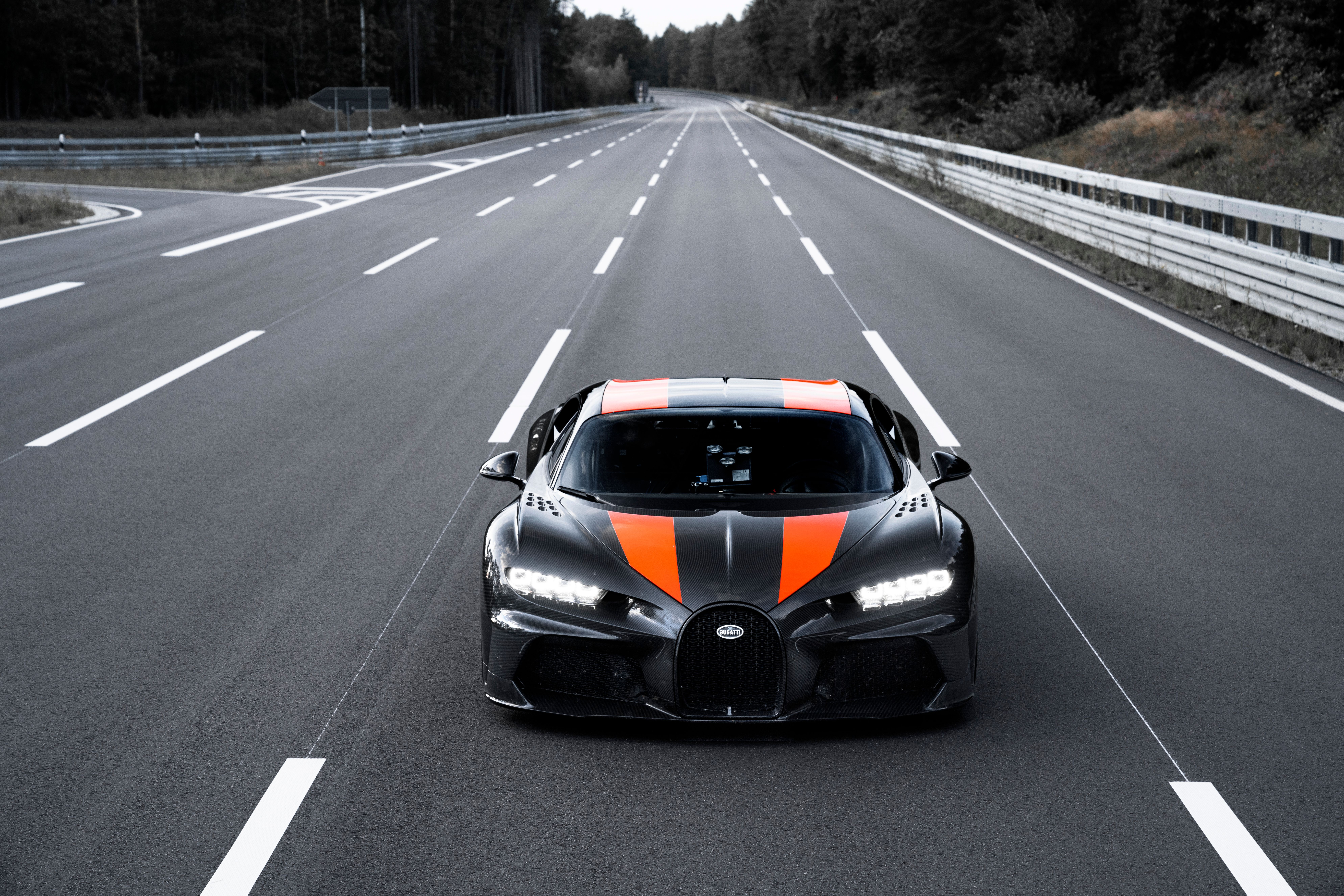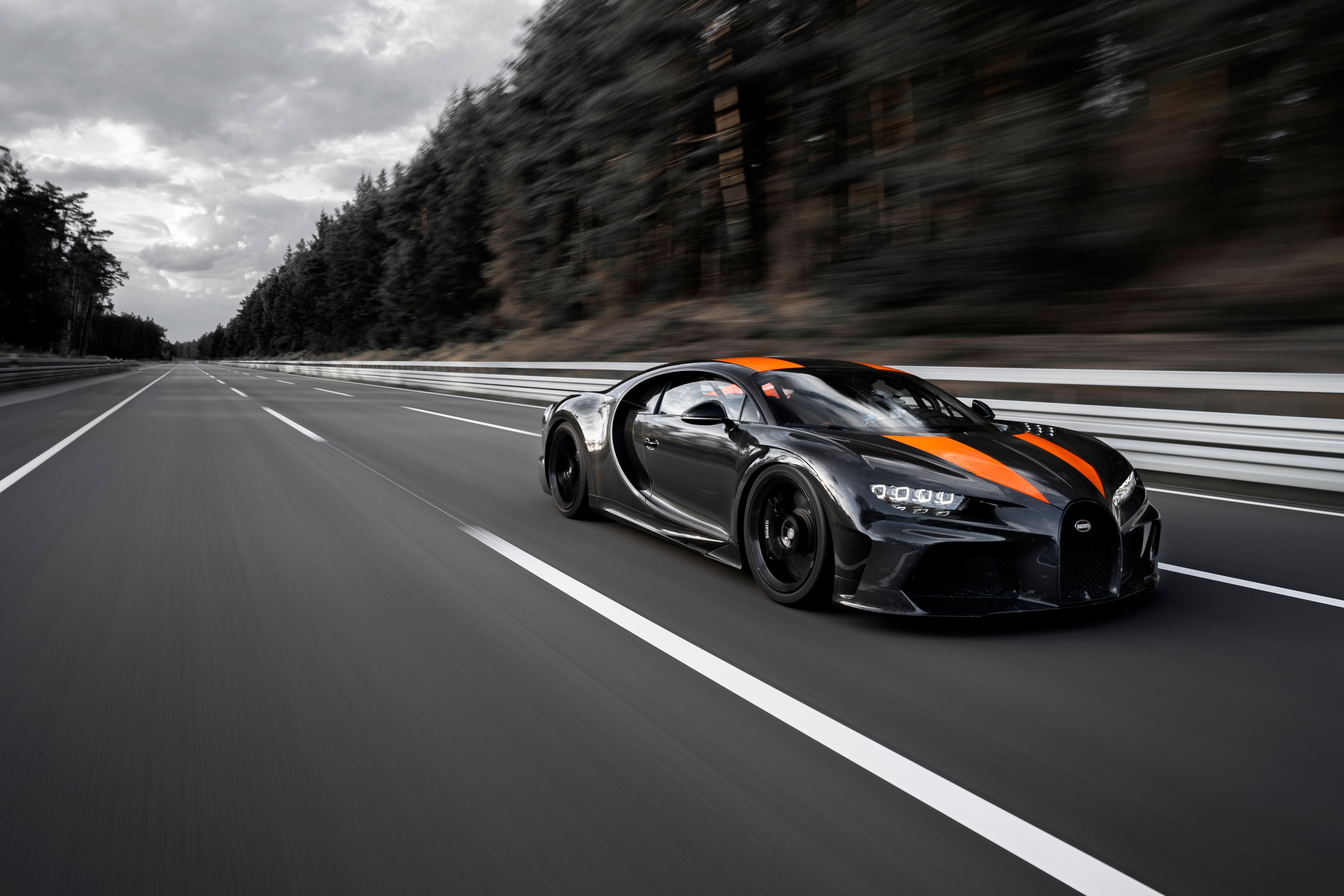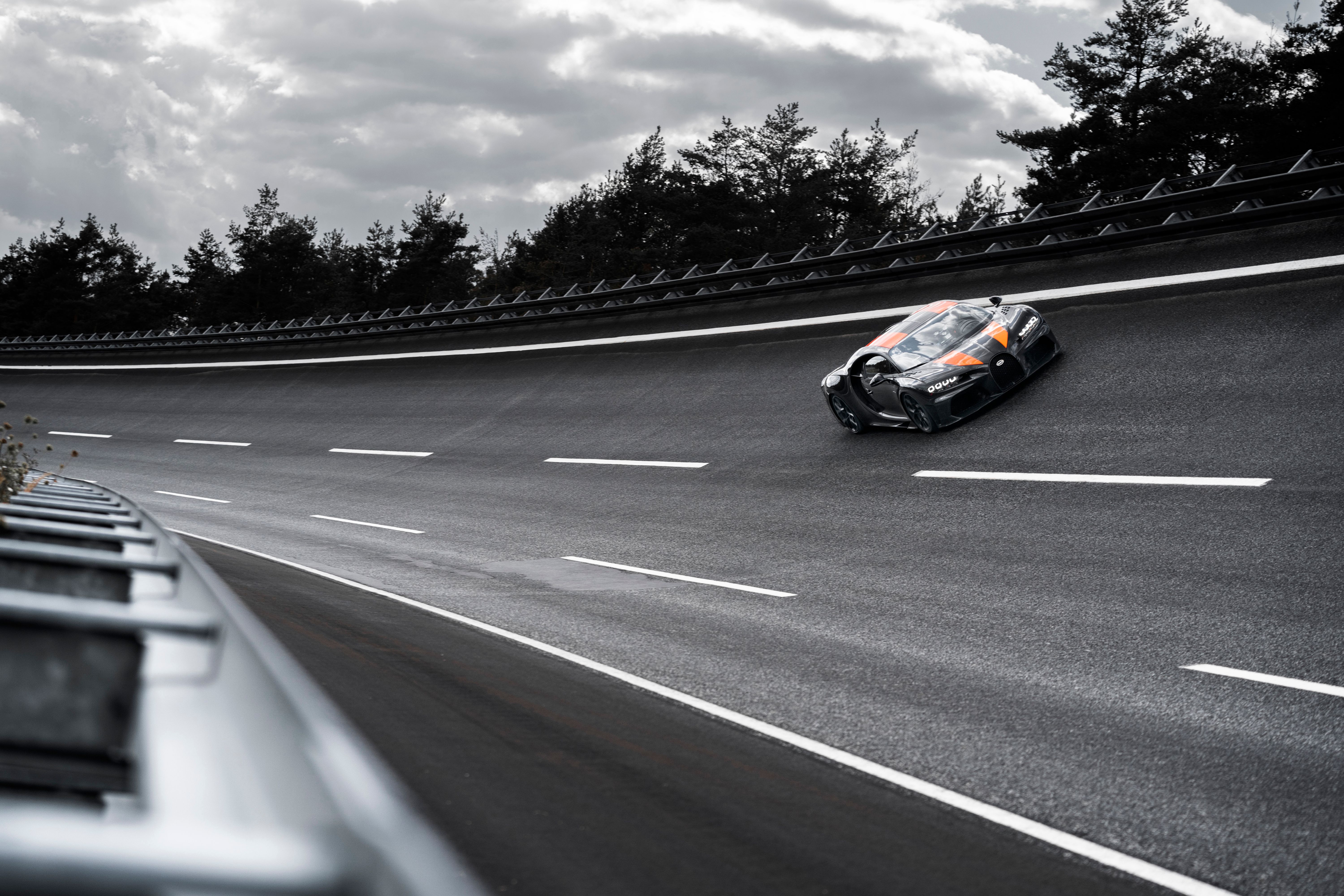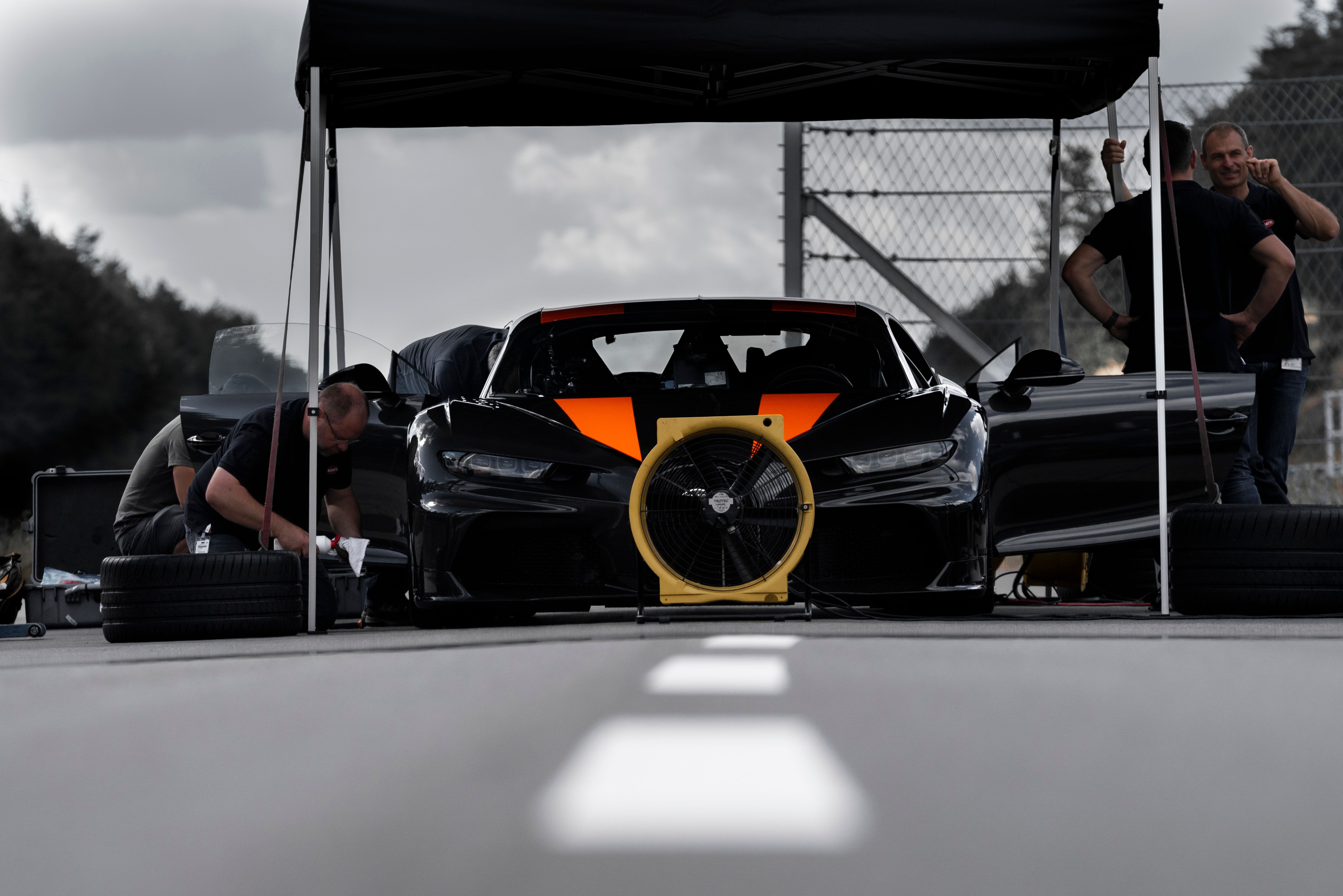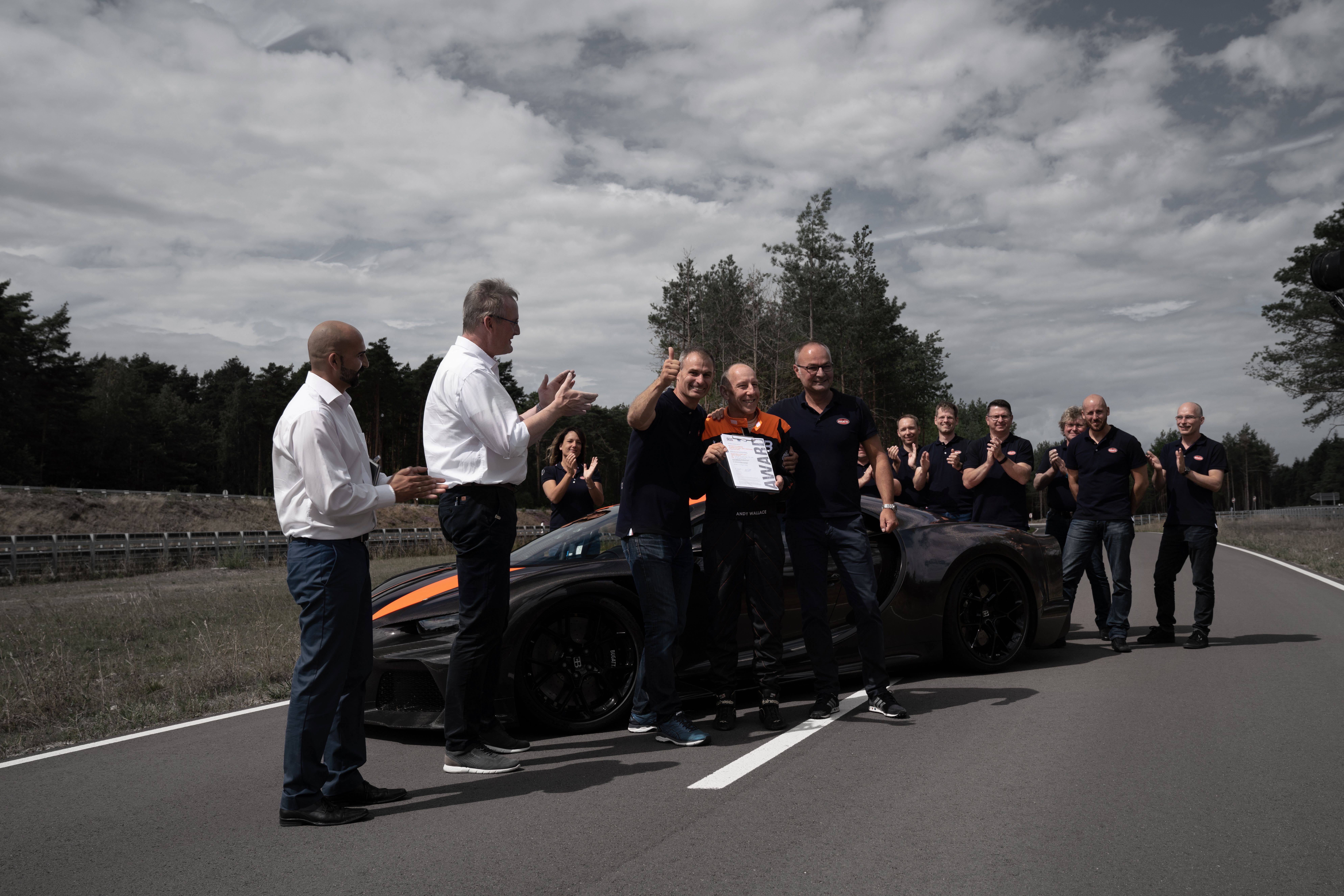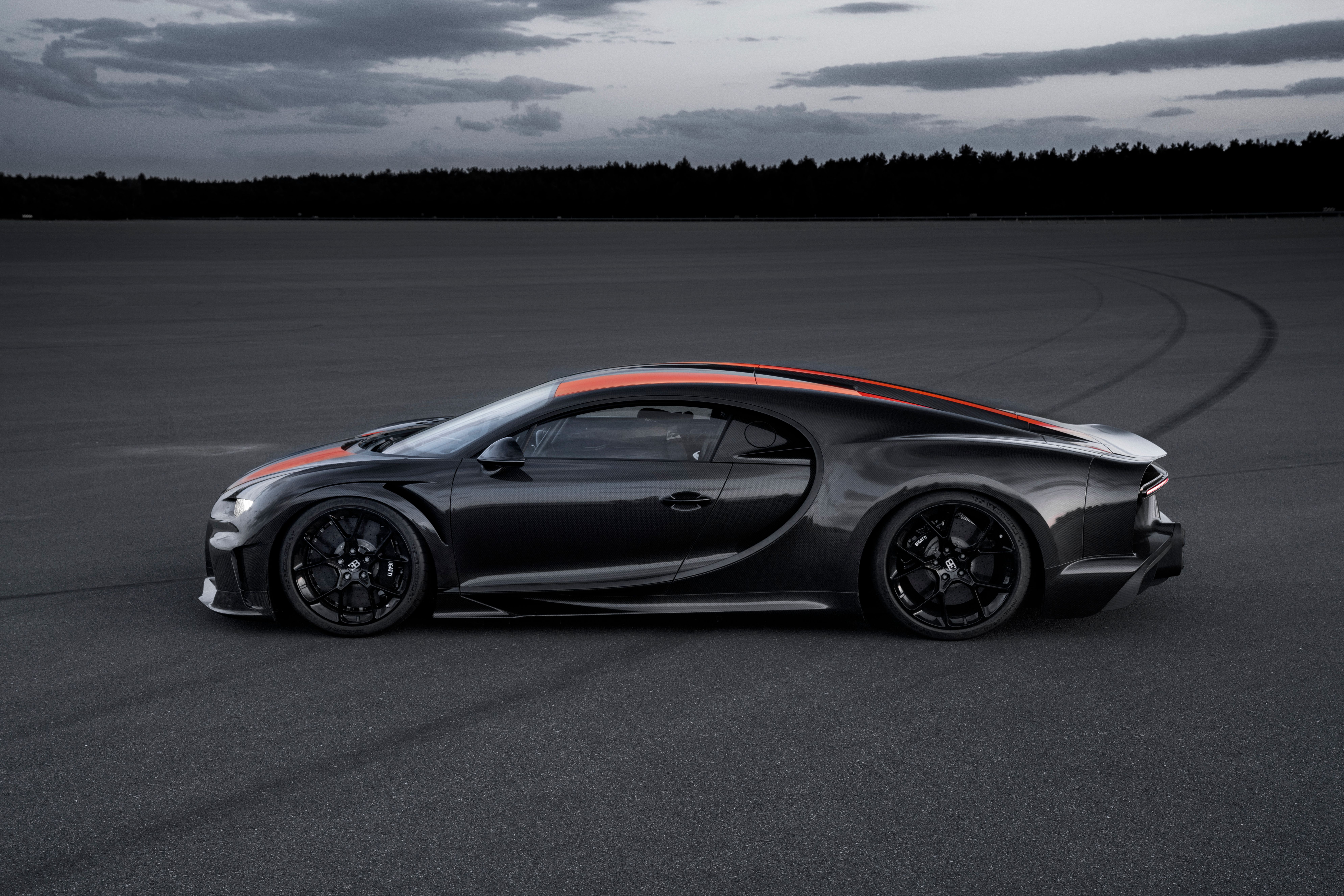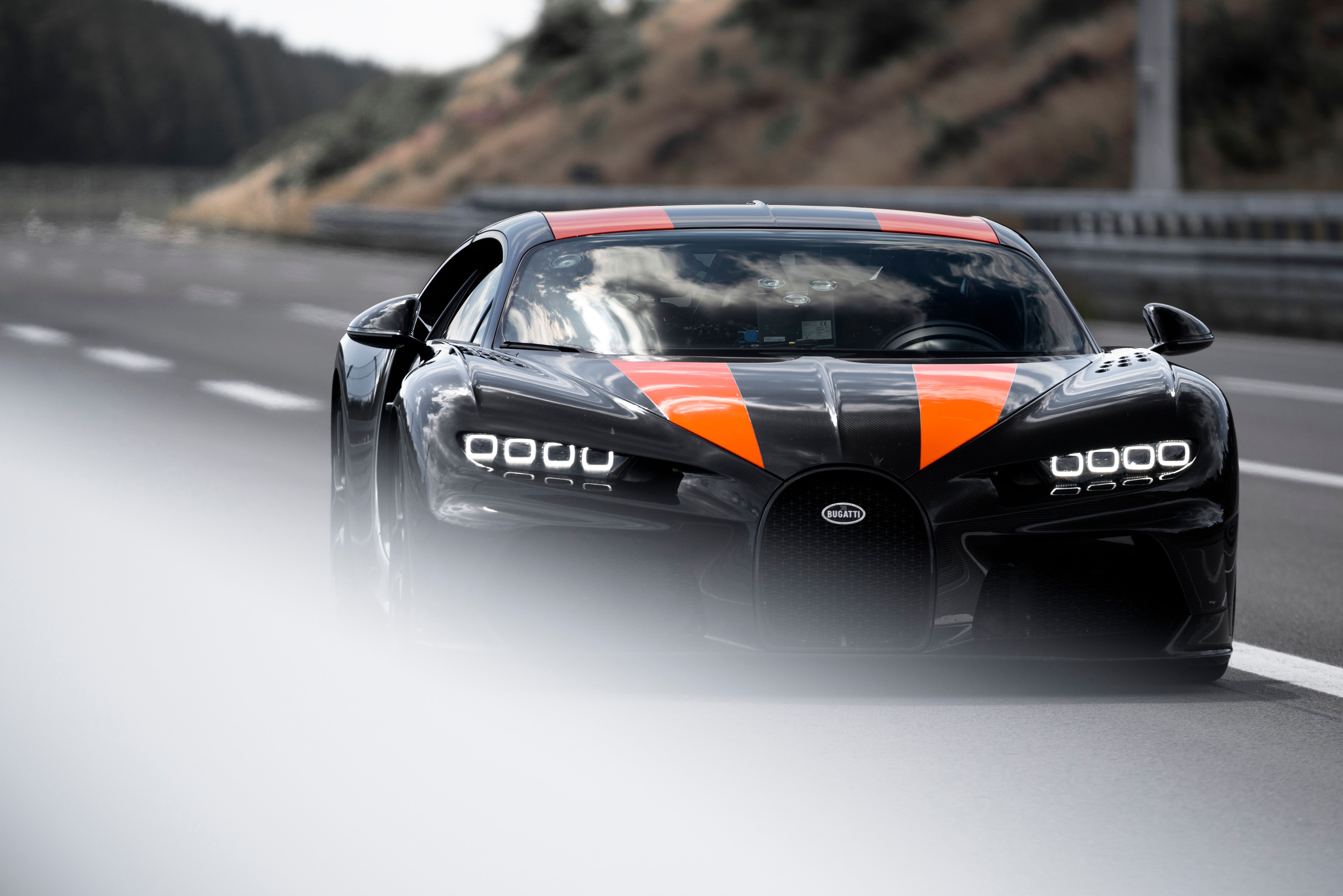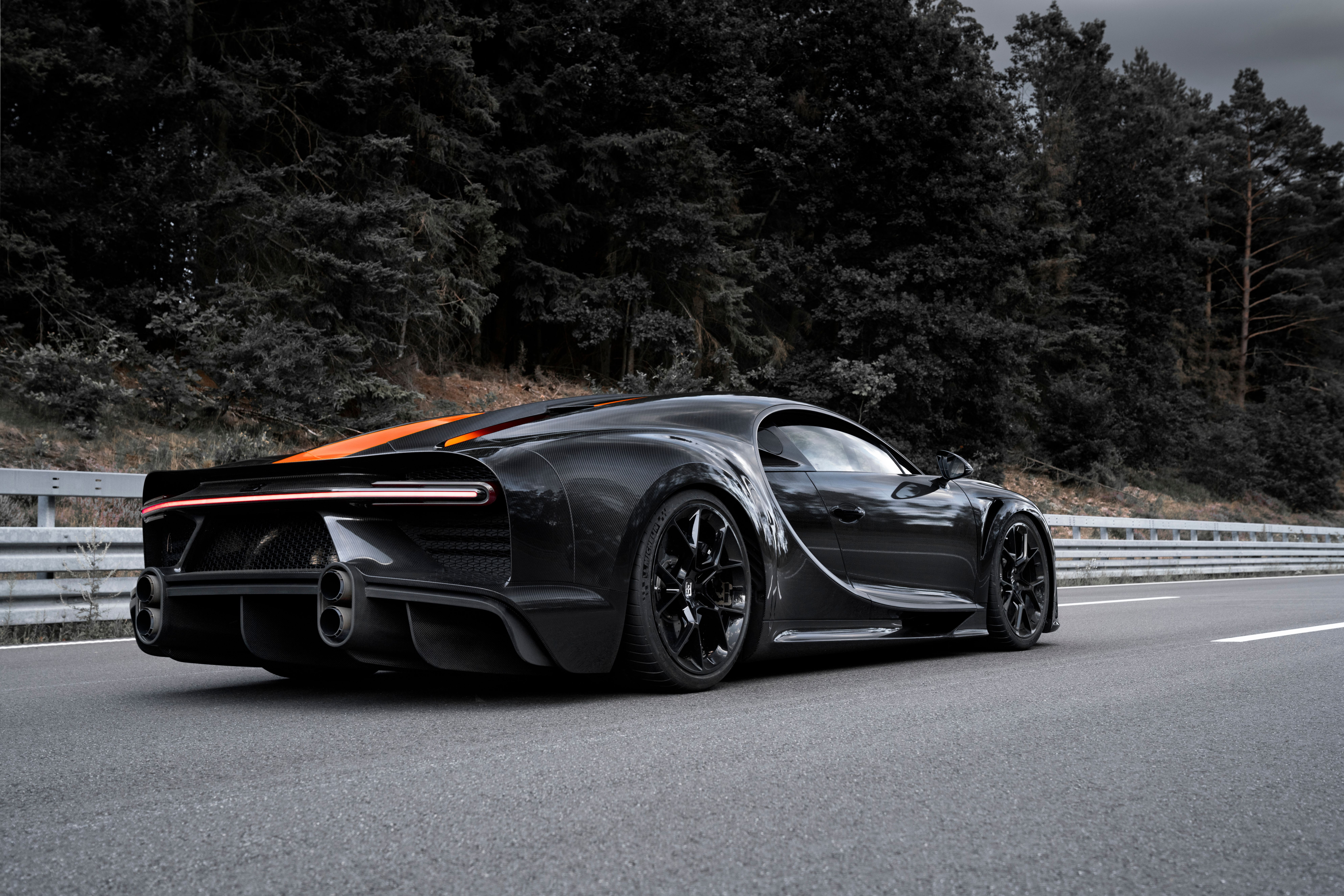Bugatti bewildered the automotive world recently when it released a video showing what the company called at the time a 'near-production' Chiron exceeding 300 mph at Volkswagen's Ehra-Lessien proving grounds in Germany. We later found out that the Chiron in question is, effectively, a whole new version of the storied Chiron, one that features heavily revised aerodynamics including a Le Mans-esque long tail and is based on the Chiron Sport. People criticized Bugatti for not doing a two-way average before claiming that their car is the fastest in the world and, in response, Bugatti says 304 mph isn't as fast as the long tail Chiron ca go.
If you're up to date with what's going on in Germany where the 2019 Frankfurt Auto Show is in full swing, you'll know by now that, not only did Bugatti argue that its faster-than-fast Chiron can go even faster, but it will also put it into production with the batch of 30 'Chiron Sport 300+' expected to sell like hotcakes although nobody's got a huge oval like that at Ehra-Lessien to test the car's ludicrous top speed. Maybe Bugatti did it under pressure from Koenigsegg and other peers that came forth saying whatever Bugatti used to reach 304 mph is not a legitimate production car and, as such, the record isn't valid. Let's see if the French company returns to the track to go even faster - although Bugatti tried to make us believe they actually don't care about top speed runs anymore... yea, right!
The Chiron Sport 300+ will become a production car and it will thus be the fastest of them all... for now
These past few days, the good old speed craze has been upon us once again. Less than two years ago, in early November of 2017, Koenigsegg announced that an Agera RS driven by the factory's test driver on a closed-off section of highway in Pahrump, Nevada achieved a two-way average of 277.87 mph and became the fastest production car in the world.
The events in the Nevada desert left Bugatti unfazed at the time, the manufacturer behind the previous fastest production car in the world seemingly letting it slide. The Chiron in its standard trim with its 8.0-liter, quad-turbocharged W-16 engine developing 1,479 horsepower at 6,700 rpm and 1,180 pound-feet of torque between 2,000 and 6,000 rpm was electronically limited at 261 mph (with the special key in place) or no more than 236 mph without the key. Along came the Chiron Sport unveiled at last year's Geneva Auto Show that brought no surprises under the hood but was 40 pounds lighter and advertised as more 'track-oriented'. It was also $400,000 more expensive than the 'normal' $3.0 million Chiron, but not faster.
But on September the 2nd, Bugatti officially dropped the mic with a black Chiron that, in the hands of Andy Wallace, topped out at 304.773 mph (GPS verified) in a one-way run, firmly beating the Agera RS' one-way top speed. At the time, I personally was puzzled by the whole thing.
For starters, all we were hearing last year is that Bugatti's lost interest in chasing speed records. First up, in April, Bugatti's CEO Stephan Winkelmann was telling CNBC that "I have a lot on my plate. The speed test is not my priority," adding that "I think we have a lot of things to do." He also suggested at the time that the Chiron's customers weren't interested in pushing the car to its limits anyway and that "I don't even know how fast our car can go." When the Chiron was originally introduced, Bugatti's former CEO Wolfgang Duerheimer, showed genuine interest in putting the Chiron through its paces with the only thing stopping the company from doing it being tires that could withstand the immense loads at speeds in excess of 280 mph.
We asked at the time if the fact that Winkelmann won't pursue a speed record run makes him unfit for his position as the boss of a brand that was rejuvenated on the claim that it would make cars that would go faster than any other while also boasting more luxury than any other.
Then, a year ago, Winkelmann talked again about the Chiron's real top speed sans electronic interference: "I think it could easily go 273 mph or 280 mph, but we’ve made no test,” he told CarAdvice during the Monterey Car Week. "If you do it then it’s not something that needs to be done only once, but all the cars need to be built in a certain way," Winkelmann added. When these statements were made, Bugatti was fresh off the unveiling of the track beast that is the Divo and Winkelmann also pointed out that "absolute top speed is not on the agenda at the time being."
Hennessey added more fuel to the fire in when John Hennessey himself opinionated that Bugatti's "sandbagging" and effectively underestimates the Chiron's might.
The discussion kept going on social media and, towards the tail end of 2018, Bugatti again downplayed the likelihood of a Chiron top speed run to follow in the footsteps of the Veyron and Veyron Super Sports, both of whom were brought to Ehra-Lessien and pitted against the GPS to see how fast they can go. Winkelmann came forth to underline once more that the Chiron is "a car covering a lot more than other super sports cars," and that top speed isn't on the shortlist for the foreseeable future.
So, looking back at all that drama, how come they did it? It's unclear as to what exactly pushed Bugatti to go back to the high-speed course in Germany but it may simply be that the company wanted to prove that it's still got it after claiming a new record is certainly within their grasp. Maybe it was a case of 'put up or shut up' and Bugatti more than held up its end of the bargain with the Chiron Super Sport 300+. We now also find out that the laws of physics were actually against the streamlined Bugatti. The PR department of the VW-owned brand can, thus, claim that they've brought nature to its knees with this one... but I don't think that's going to happen.
Winkelmann was quoted in a statement released by Bugatti that's surely going to be an enjoyable read for any physics geek out there that "we’re not just the first manufacturer to produce a car that goes faster than 300 miles per hour – at 304.773 mph (490.484 km/h). We also did this on a test track that has a major drawback when it comes to speed tests." He's talking about the fact that Ehra-Lessien is located in Lower Saxony, an area of Germany that's only 50 meters (164 feet) above sea level and that means the air is denser than on the Nevada highway where the Agera RS put the Veyron Super Sports to shame in 2017.
"To put it simply, the car has to apply more force at sea level to drive through the air than if it were traveling at an altitude of around 1,000 meters," Bugatti's press release reads before delving into the correlation between the drag coefficient (the quantity used to reflect the resistance of an object in a fluid environment such as air) and the Reynolds number. The latter "represents the ratio between inertial and frictional forces". What you should remember from all this jargon is that, according to Stefan Ellrott, Head of R&D at Bugatti, "Our calculations have shown that we would have been around 25 km/h faster in Nevada." That's about 15.5 mph which means that the Chiron Super Sport 300+ could've been called the Super Sport 310+ had it run on the same piece of highway as the Agera RS.
But that will never happen because Bugatti puts safety ahead of speed. "The route in Nevada is very long and only goes in one direction: security forces would have taken too long to get to the scene in an emergency. In addition, the track has a slight gradient of about three percent. It wouldn’t have felt right to set a record there," added Ellrott.
This makes planning that much harder because, as Ellrott points out, "there are four crucial factors when it comes to making a record attempt: the vehicle, the track, the location, and the weather. All four have to be right and perfectly prepared so that everything is coordinated. The only thing we can’t influence is the weather," and it helps to have your own track ready and waiting for when the weather's just fine (oh, and by the way, it was a bit windy when Andy Wallace got that Chiron to 304 mph but he didn't seem to be bothered by it).
That's not only because the Chiron's an amazingly stable car but also because Wallace has some experience driving around Ehra-Lessien at scarcely believable speeds. He's the guy who pushed the McLaren F1 all the way to 242.9 mph (the two-way average 240.14 mph) on March, 31st 1998. The Briton, a former endurance racing specialist known for winning the 24 Hours of Le Mans outright with Jaguar on his first attempt back in 1988 before becoming McLaren's chief development driver during the gestation period of the F1, has been a test driver for Bugatti for a while now and has amassed an astounding 70,000 miles behind the wheel of various Chirons. He's also the one responsible for customer handovers as he's more than qualified to show people around the car and "what it can do but also prove it's not going to bite." We bet he'll enjoy delivering some of the 30 Super Sport 300+ cars that are slated to be made at a price close to $4 million apiece as well - but none of the future owners will go as fast as Wallace, that's for sure.
Further Reading
The Bugatti Chiron Has Officially Broken 300 MPH, But It's Not a Production Model
Read our full review on the 2018 Bugatti Chiron.
Read our full review on the 2018 Bugatti Chiron Sport.

